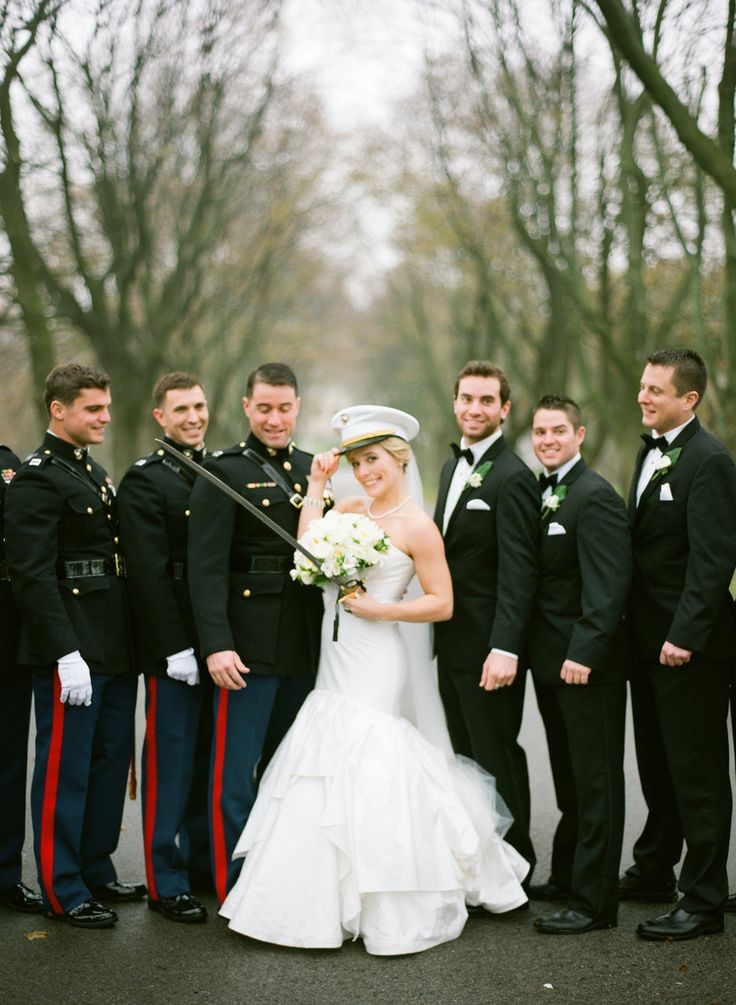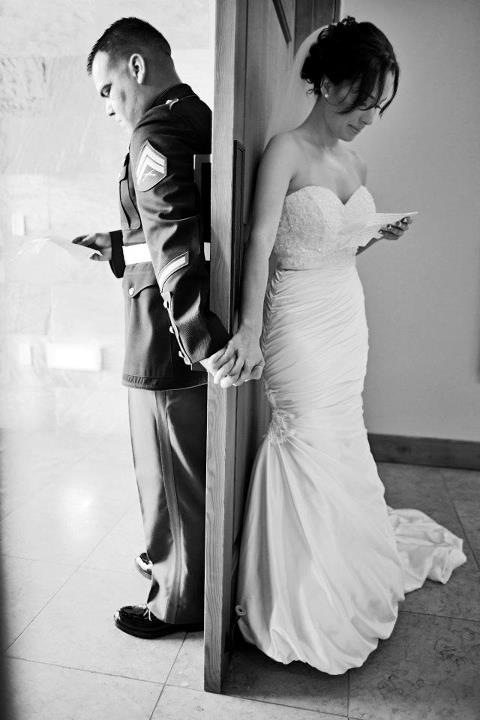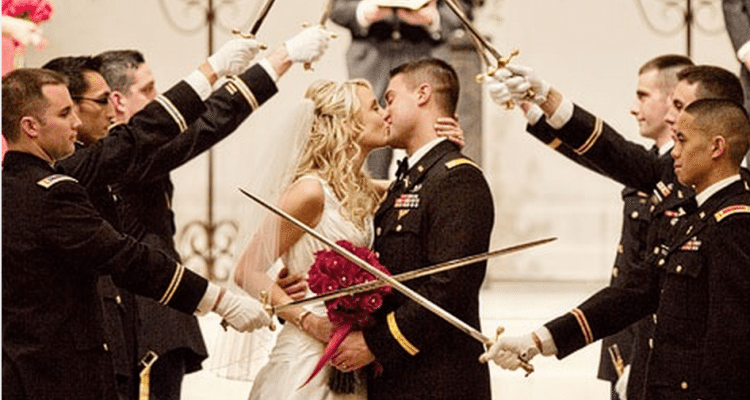The day’s finally arrived. After all these years waiting for the right one, you’ve finally find that special someone. Soon a marriage proposal comes your way, one that’s sure to change life forever. Finally, you’ve got the chance to plan the wedding you’ve dreamed about since childhood. And all your plans start falling in place, almost like magic — when suddenly something comes up to change the tune. Your soon-to-be spouse learns they’re about to be deployed overseas.

See Also Shop for Military & Patriotic Wedding Favors | Military Wedding Favor Ideas
All your hopes and dreams for happiness seem lost … at least for now. You still long to marry — but there’s so much to do, and so many unique circumstances that other couples don’t face! From finding a chaplain to paying those amped-up fees involved in a rush wedding, your task list can seem even more daunting than the average bride’s.
True, it’s not like you’re the only one to face this. Others, too, have lived the military life from day one, and were so proud to play a role that they enlisted as adults. If you’re one of those who grew up in the military, shifting from base to base and city to city, you probably long for a military wedding that embodies all the traditions and pride you’ve cherished all your life.
Yet, as you know, there are plenty of rules and regulations when it comes to doing things military style — even for weddings. And staying within the guidelines can be overwhelming. As a bride, you need answers on how to do it — and those answers won’t be found in the pages of all those bridal magazines or bridal books. But take heart!
It goes without saying: there are vast differences between a civilian and a military wedding. In the the latter case, the ceremony may take place at the base/post chapel. Your officiant will be a military chaplain. The Arch of Sabers or Swords (depending on the branch of service) is used. And you’ll need to pay special attention to the special formalities involved with invitations and seating arrangements

#1 – Buy Wedding Insurance
Even if the couple chooses not to have the traditional Military Wedding, insurance (unless they are having a quick, simple civil ceremony at the courthouse) will save headaches and cover the loss of deposits or money due to changes or cancellations. When you marry into the military, never-ending shifts in deployment dates — quick deployments, delayed deployments, and extended deployments — are common. It’s best to plan ahead and be safe.
Take this example: The date’s been set for a year out. You paid the deposits, and prepared the invitations (whew!). Then a set of orders shows up for the bride or groom that read, “Report to your duty station 19 May 2012. ” Unfortunately, the wedding date was set for 25 May 2012! You now have to change everything … and even re-order those invitations.
Unless you’re working with extremely military-friendly vendors, there’s a real risk of losing hefty deposits. Insurance is your best bet for safeguarding against this.
#2 – Learn the Lingo
For a new bride who’s marrying into the service, there’s a whole new lingo to learn. For starters, you’ll need to get acquainted with the formalities of the Arch … but do the groomsmen raise Swords, or is it Sabers?
Here’s your answer: Sabers are used for Air Force and Army. Swords are used for Coast Guard, Marine Corps and Navy. The National Guard and Reserve go by the same etiquette and regulations of their service branch (i.e. Army National Guard, Air National Guard, Naval Reserve, etc). Also, although most military personnel won’t own a Sword or Saber, they can contact the Chaplain — who’ll normally have these on hand for your use, or if not, the Commander will.
There are plenty of other terms you’ll want to become familiar with and knowledgeable about, but don’t worry … as time goes on, the language will become second nature.
#3 – “Can We Skip the Bride’s Ceremonial ‘Swat’ With the Sword?”
For tradition’s sake, you’re better off leaving it in. After all … wasn’t it the tradition that drew you to the idea of a full military wedding in the first place? It’s best to only omit this step if the bride’s the service member.
If you’re not familiar with “the Swat,” here’s how it works: When the groomsmen assemble after the vows, the bride and groom then pass through the Arch of Saber or Swords (this symbolizes the military’s welcome, and the couple’s safe transition into their new life together). The couple pauses as the last two men lower their sabers or swords in front of the bride and groom. Then, the man to the right will then lightly “swat” the bride on the rear and say “Welcome to the Army” (or name the appropriate branch of service).
#4 – Know the Seating Etiquette
It’s important to know the proper seating arrangements for guests — not to mention, where the bride and groom should stand, including who stands on which side. The standing arrangement is determined by whether the service member is an officer, or enlisted.
A guest list will have Commanders, other Officers within the unit, and peers. It’s important to know the proper seating for all your guests … and also for the receiving line. Everyone associated with a service member (i.e. their Commanders, Officers and peers within the unit or office) should be invited to the wedding.
When seating the groom or bride’s Commander and spouse, seat them with the family of the bride or groom, whichever group they represent. Commanders are usually seated in the front row when the bride or groom’s parents can’t attend. Seat all other higher-ranking Officers directly behind the family of either the bride or groom.
See Also Shop for Military & Patriotic Wedding Favors | Military Wedding Favor Ideas


